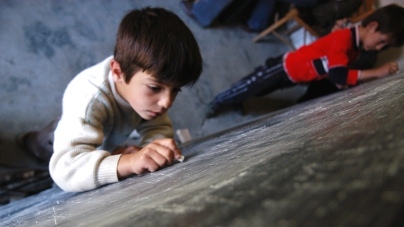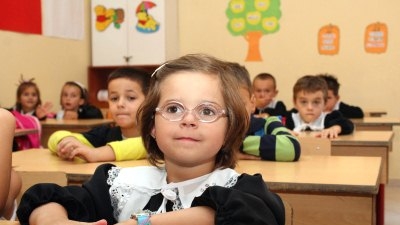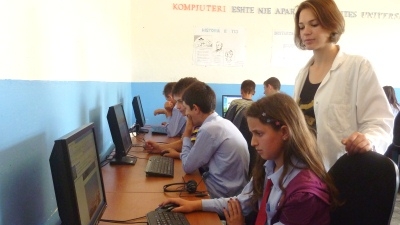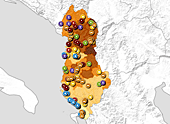Results
With IDA funding, the EEEP resulted in several key outcomes for the education sector:
- Improved relevance of curricula in basic and secondary education through the introduction of new student-centered curricula benefiting 560,000 students nationwide. According to the Albanian Center for Economic Research, between 2007 and 2011, teacher satisfaction with the relevance of the curriculum increased from 50 to 75 percent. Along with the development of a curriculum framework and learning standards, the EEEP also supported teacher training for over 12,500 teachers.
- Enhanced quality of physical classroom conditions through investments in infrastructure and equipment. The EEEP supported the construction or rehabilitation of 607 classrooms and laboratories and the provision of over 24,000 computers and Internet connectivity to schools. According to Ministry of Education and Science (MoES) data, the student-computer ratio fell from 46 to 14 (urban) and 133 to 13 (rural).
- Strengthened institutional governance in higher education through technical assistance to develop and implement the Higher Education Strategy 2013–20, key financing reforms, and standards for higher education institutions that were used to launch a Higher Education Program Ranking Initiative. All universities in Albania now have strategic plans and external governing boards.
Bank Group Contribution
The World Bank provided US$15 million of IDA funds, or 20 percent of the EEEP’s total value of US$75 million. The pooled funding model allowed the World Bank to leverage its funds to achieve significant results. The Bank also supervised the administrative and fiduciary aspects of the project on behalf of the other cofinanciers. Civil works activities accounted for approximately 50 percent of project funds, and teaching and learning equipment accounted for another 30 percent. The final 20 percent supported technical assistance for curriculum revision, higher education governance reform, development of an Education Management Information System (EMIS), and other activities.
Partners
The EEEP was designed to support country systems and facilitate cooperation and coordination among partners. The World Bank, CEB, and EIB each provided US$15 million to the EEEP, and all three cofinanciers participated in the semi-annual review meetings organized by the MoES. The review meetings provided opportunities for the Government and donor partners to review progress on the annual plans of EEEP activities and to endorse next year’s plan based on consistency with project objectives, cost effectiveness, and sustainability.




